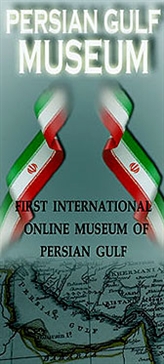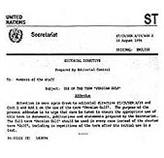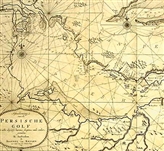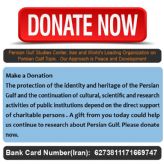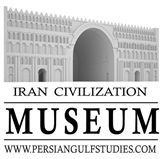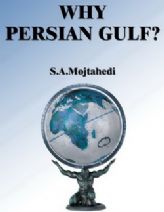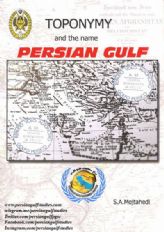Museum of Parthian Iran
Some Part of Parthian Treasures
(247 BCE – 224 CE)
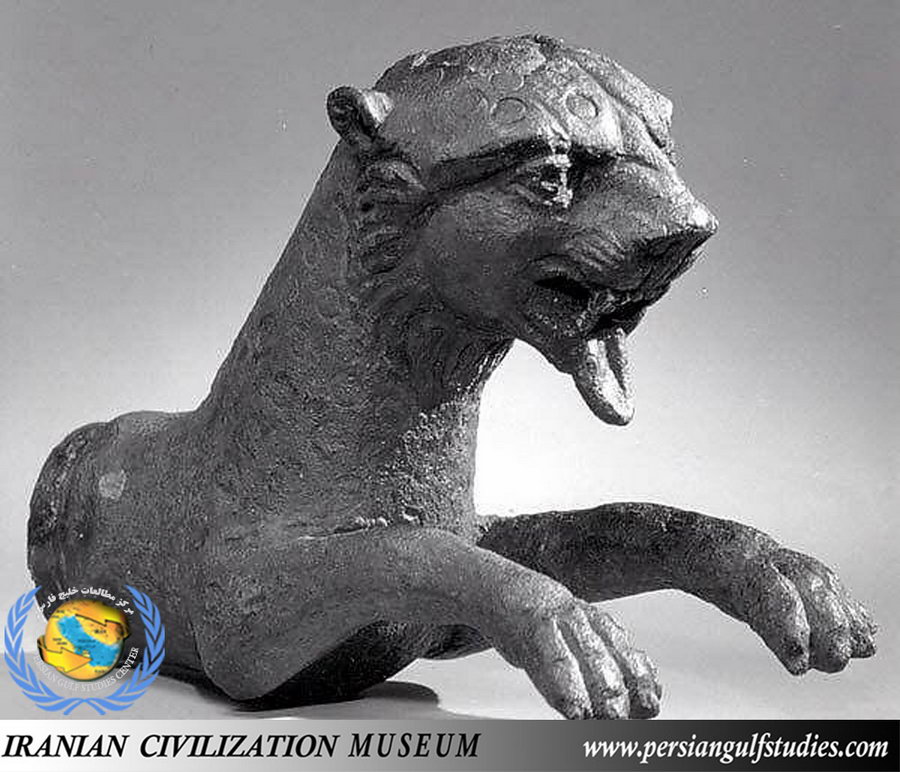 Forepart of a leopard, Bronzem, Parthian period, ca. 3rd century B.C. 3rd century A.D, The Metropolitan Museum of Art
Forepart of a leopard, Bronzem, Parthian period, ca. 3rd century B.C. 3rd century A.D, The Metropolitan Museum of Art
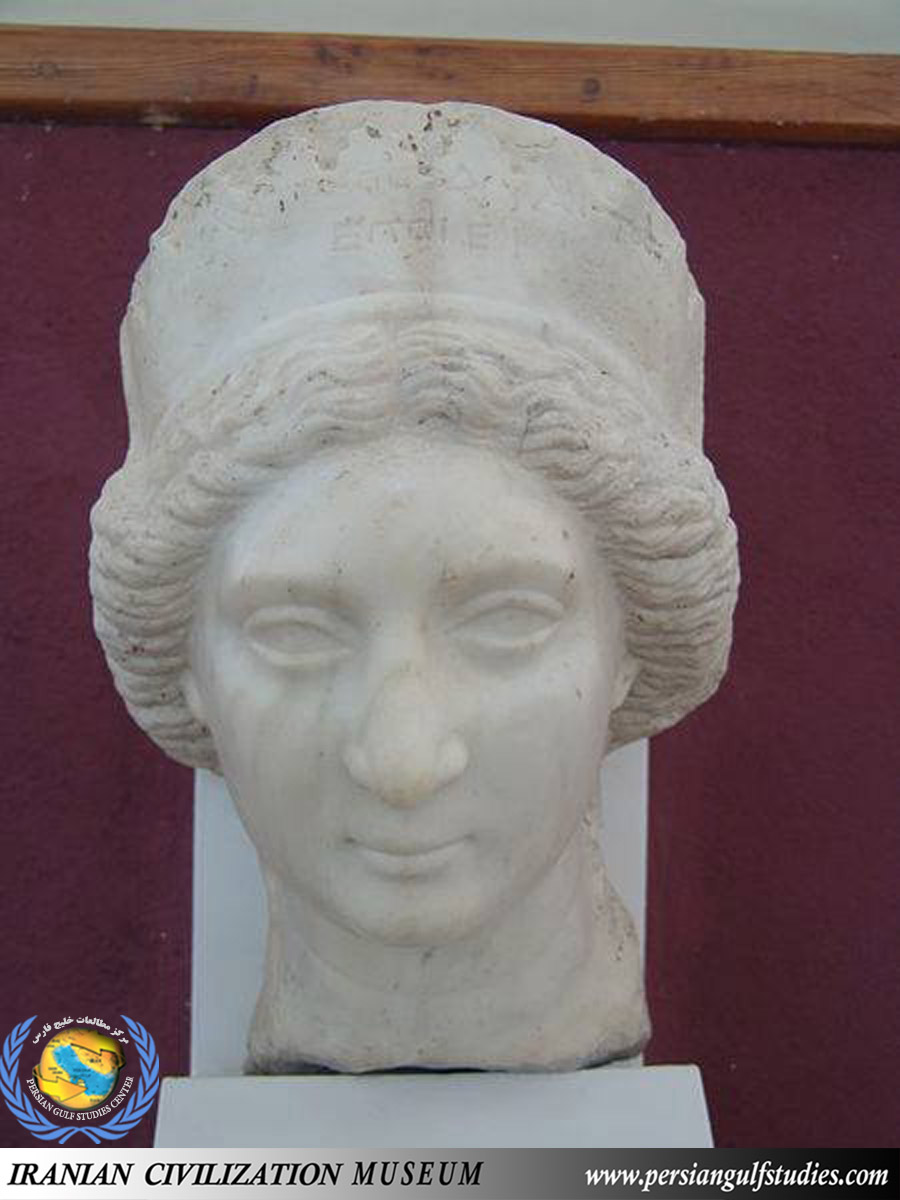 A bust from Queen Musa, wife of Phraates IV of Parthia, excavated by a French team in Khuzestan in 1939, The National Museum of iran
A bust from Queen Musa, wife of Phraates IV of Parthia, excavated by a French team in Khuzestan in 1939, The National Museum of iran
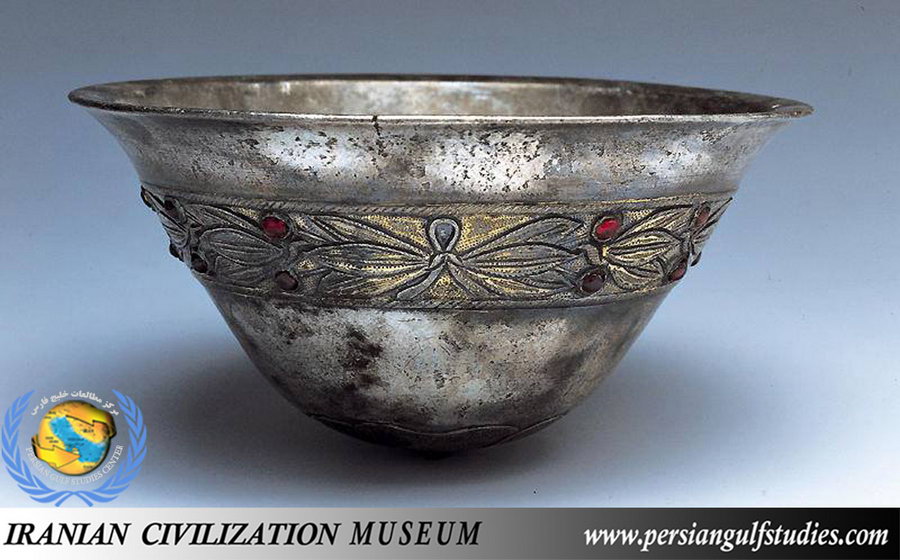 Conical Cup with Trefoil Garland, Parthian Persian empire, Second half of the 2nd - first half of the 1st century B.C, Gilded silver, garnet Silver gilt with garnet inlays, Japan Miho Museum
Conical Cup with Trefoil Garland, Parthian Persian empire, Second half of the 2nd - first half of the 1st century B.C, Gilded silver, garnet Silver gilt with garnet inlays, Japan Miho Museum
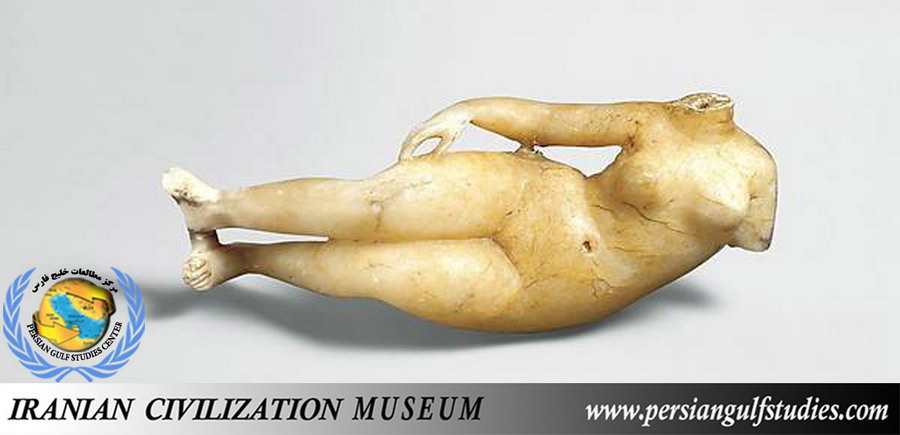 Figure of a reclining persian woman, Parthian Period, ca. 2nd century B.C.–2nd century A.D. Mesopotamia said to be from Ctesiphon, The Metropolitan Museum of ART.
Figure of a reclining persian woman, Parthian Period, ca. 2nd century B.C.–2nd century A.D. Mesopotamia said to be from Ctesiphon, The Metropolitan Museum of ART.
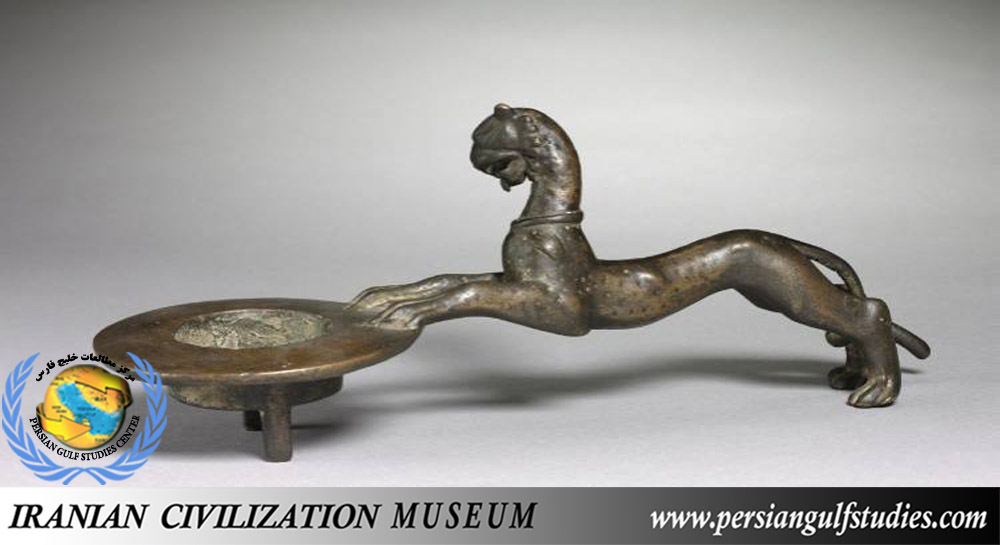 Feline-Handled Incense Burner, Parthian Iran, possibly Borujerd, c. AD 100 bronze, cast, Cleveland Museum of Art
Feline-Handled Incense Burner, Parthian Iran, possibly Borujerd, c. AD 100 bronze, cast, Cleveland Museum of Art
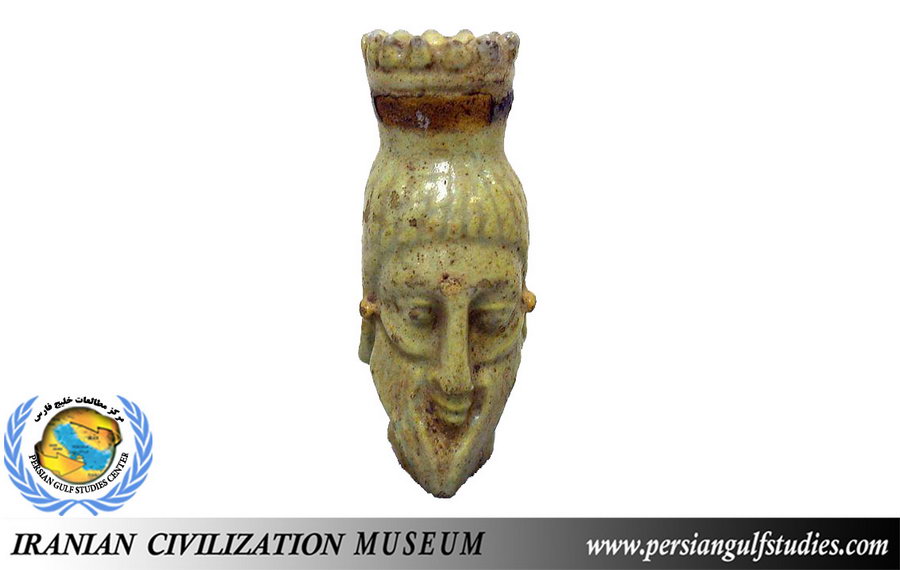 Faience head of Parthian, ca. 3rd century B.C.–3rd century A.D. Parthian and Persian, The Metropolitan Museum of Art
Faience head of Parthian, ca. 3rd century B.C.–3rd century A.D. Parthian and Persian, The Metropolitan Museum of Art
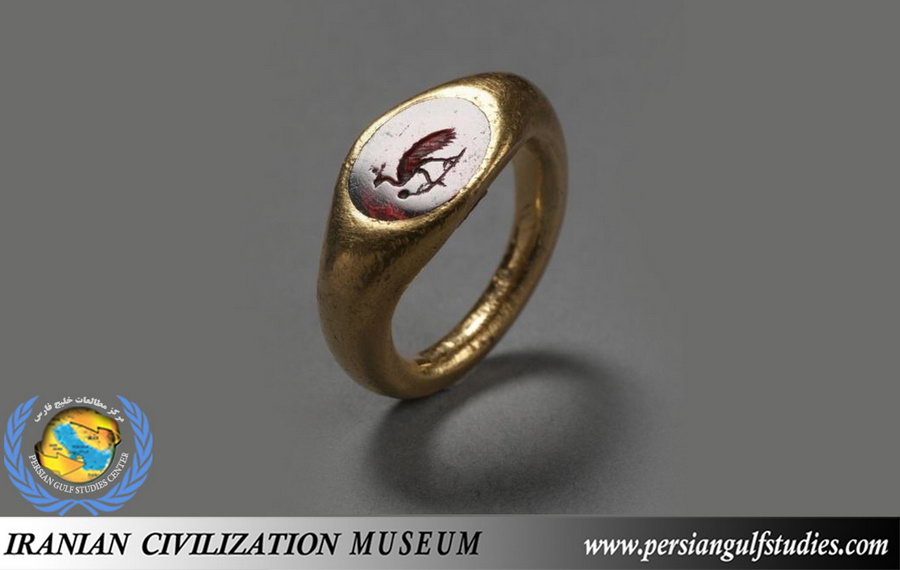 Golden Peacock Ring, Parthian, Iran, Seleucia, 1st-2nd Century, Cleveland Museum of Art
Golden Peacock Ring, Parthian, Iran, Seleucia, 1st-2nd Century, Cleveland Museum of Art
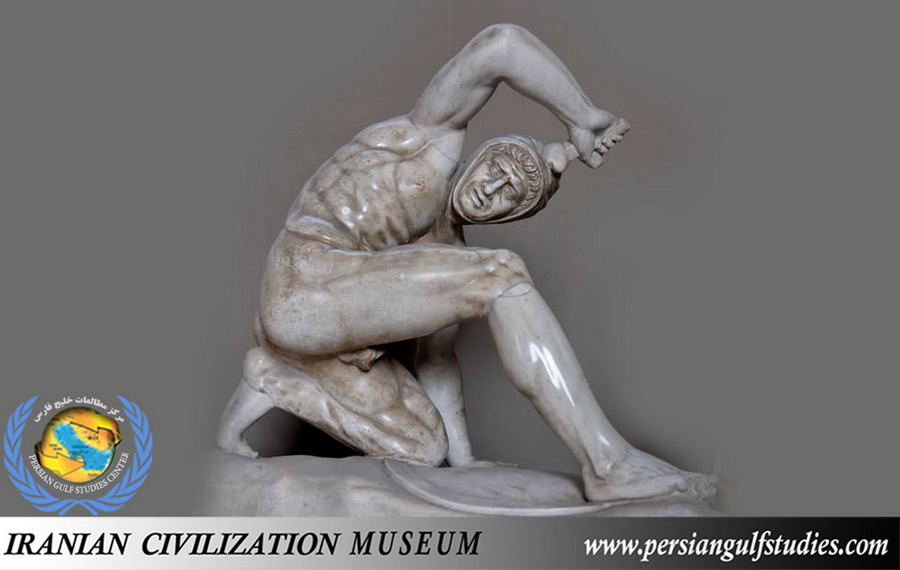 The Persian Warrior soldier from Marble, This small statue is probably a Roman copy, made about 110-120 A.D., of one of a group of four bronzes which commemorated Greek victories over their enemies. These sculptures had been set up as a votive offering by Attalos II of Pergamon around 160-150 B.C. on the Acropolis in Athens and at Pergamon itself (the so called Pergamene "Little Barbarians"). The original of this statue belonged to a group which celebrated the triumph of the Greeks over the Persians following the famous Battle of Marathon in 490 B.C. This statue was discovered in Rome between 1503 and 1512, together with other copies of statues from Pergamon, during the work of constructing the Medici Palace, nowadays Palazzo Madama. Vatican Museum
The Persian Warrior soldier from Marble, This small statue is probably a Roman copy, made about 110-120 A.D., of one of a group of four bronzes which commemorated Greek victories over their enemies. These sculptures had been set up as a votive offering by Attalos II of Pergamon around 160-150 B.C. on the Acropolis in Athens and at Pergamon itself (the so called Pergamene "Little Barbarians"). The original of this statue belonged to a group which celebrated the triumph of the Greeks over the Persians following the famous Battle of Marathon in 490 B.C. This statue was discovered in Rome between 1503 and 1512, together with other copies of statues from Pergamon, during the work of constructing the Medici Palace, nowadays Palazzo Madama. Vatican Museum
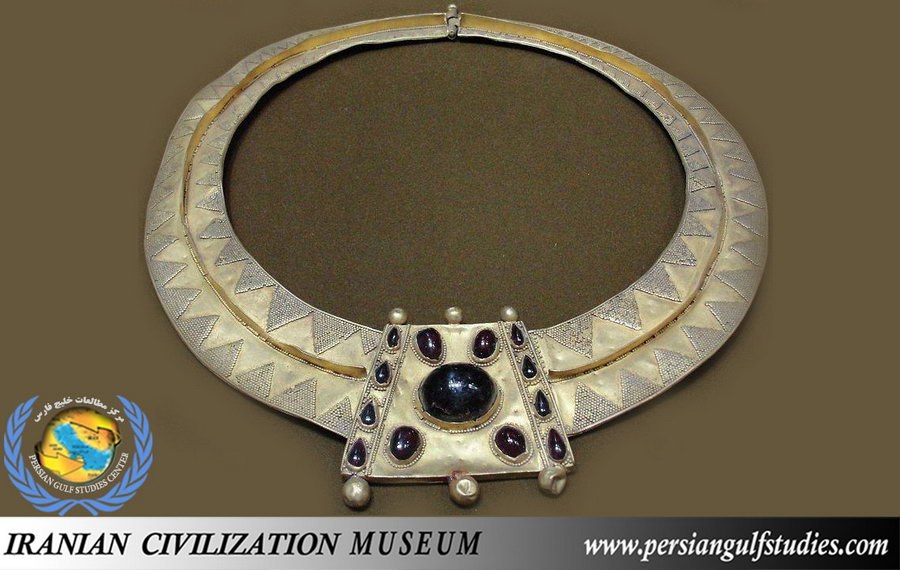 Parthian golden necklace, 2nd century A.D. Iran, Reza Abbasi Museum
Parthian golden necklace, 2nd century A.D. Iran, Reza Abbasi Museum
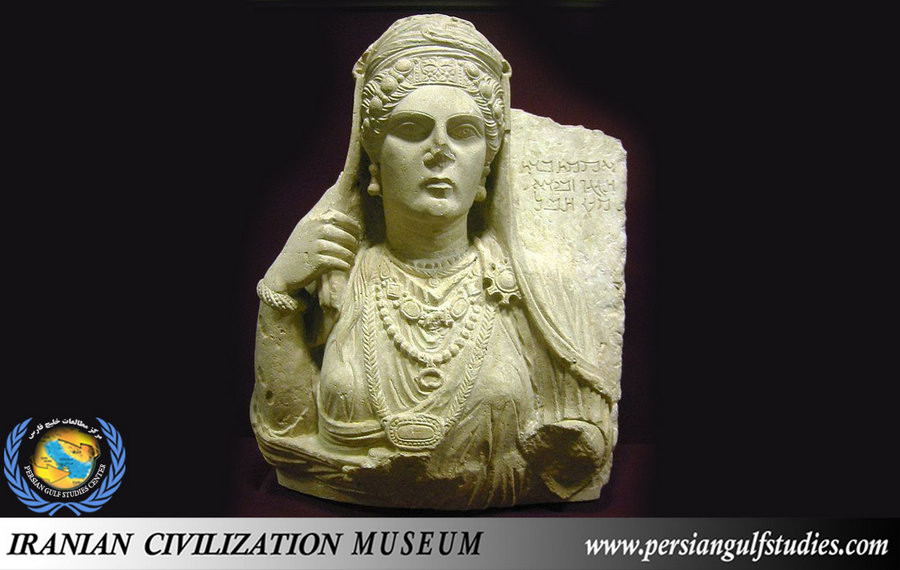 Persian Parthian sculpture - Palmyra Syria, National Museum of Oriental Art
Persian Parthian sculpture - Palmyra Syria, National Museum of Oriental Art
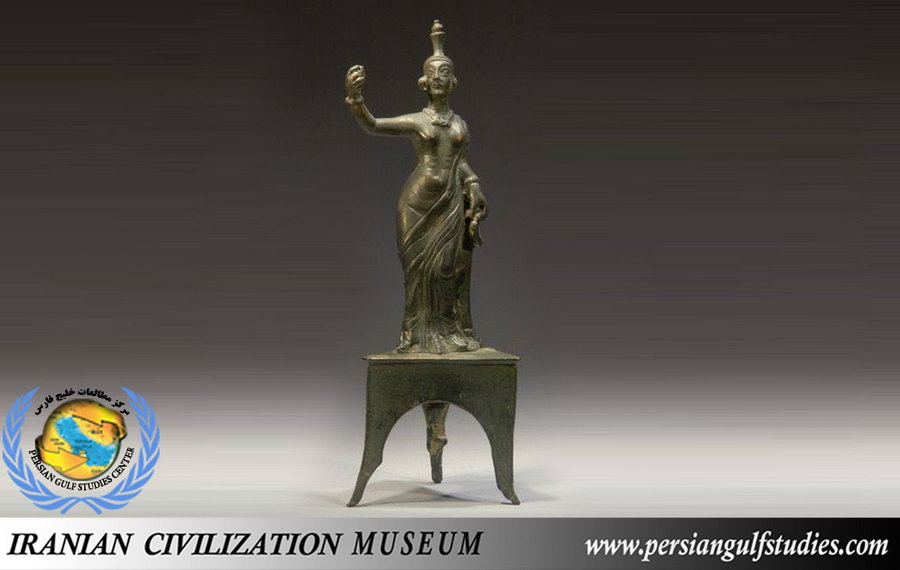 Parthian bronze priestess wearing an attribute headpiece Chiton, and necklace. 2nd Century AD, stands upon and integrally cast tripodal platform
Parthian bronze priestess wearing an attribute headpiece Chiton, and necklace. 2nd Century AD, stands upon and integrally cast tripodal platform
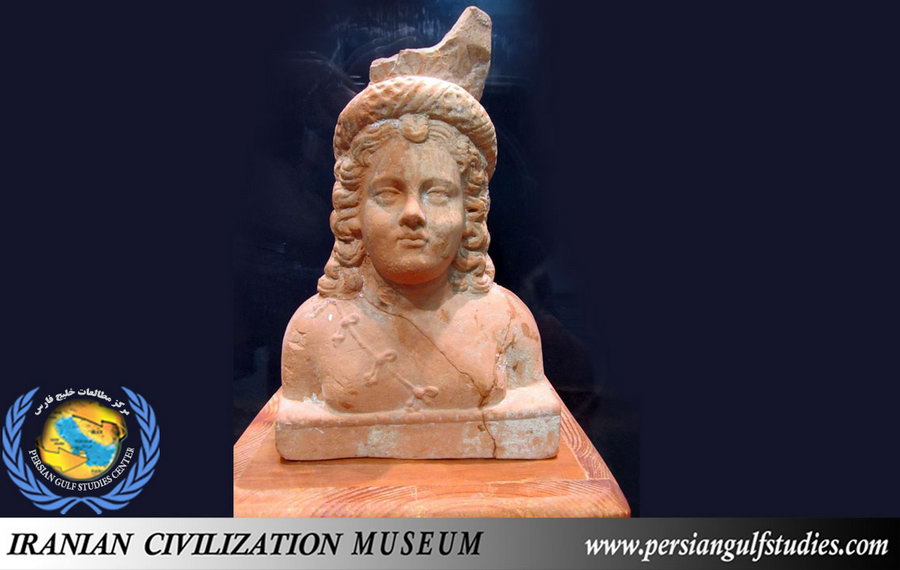 Bust sculpture of a Parthian Lady discovered from Susa, Iran. The Parthian period, kept at: Museum of Susa in Khuzestan
Bust sculpture of a Parthian Lady discovered from Susa, Iran. The Parthian period, kept at: Museum of Susa in Khuzestan
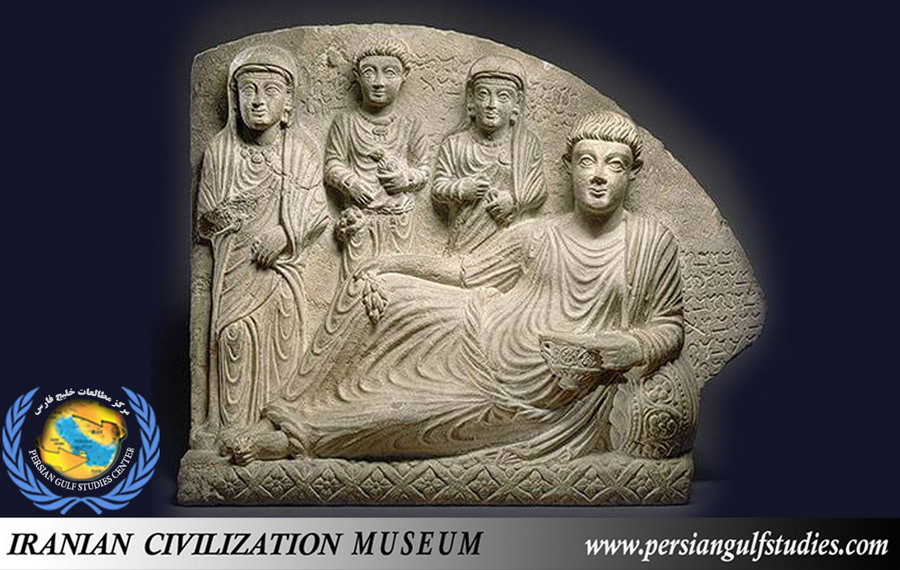 Gravestone with funerary banquet, 2nd–3rd century, Excavated at Palmyra, Syria. Parthian period , The Metropolitan Museum of Art
Gravestone with funerary banquet, 2nd–3rd century, Excavated at Palmyra, Syria. Parthian period , The Metropolitan Museum of Art
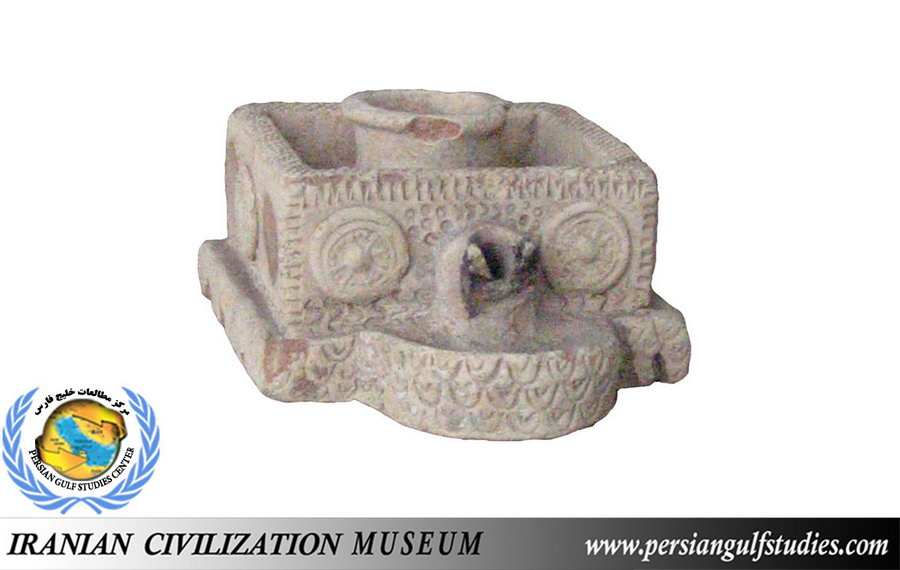 A Parthian ceramic oil lamp, from Khūzestān Province, Iran. National Museum of Iran
A Parthian ceramic oil lamp, from Khūzestān Province, Iran. National Museum of Iran
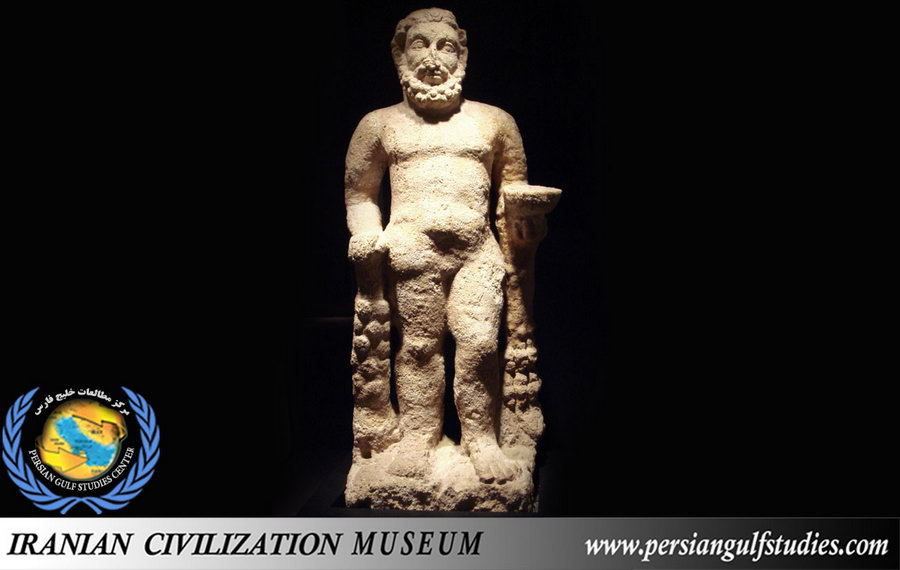 Hercules Statue, Hatra Iraq, Parthian period, 1st–2nd century AD. Unfortunately destroyed By ISIS terrorists (Supported by Saudi arabia)
Hercules Statue, Hatra Iraq, Parthian period, 1st–2nd century AD. Unfortunately destroyed By ISIS terrorists (Supported by Saudi arabia)
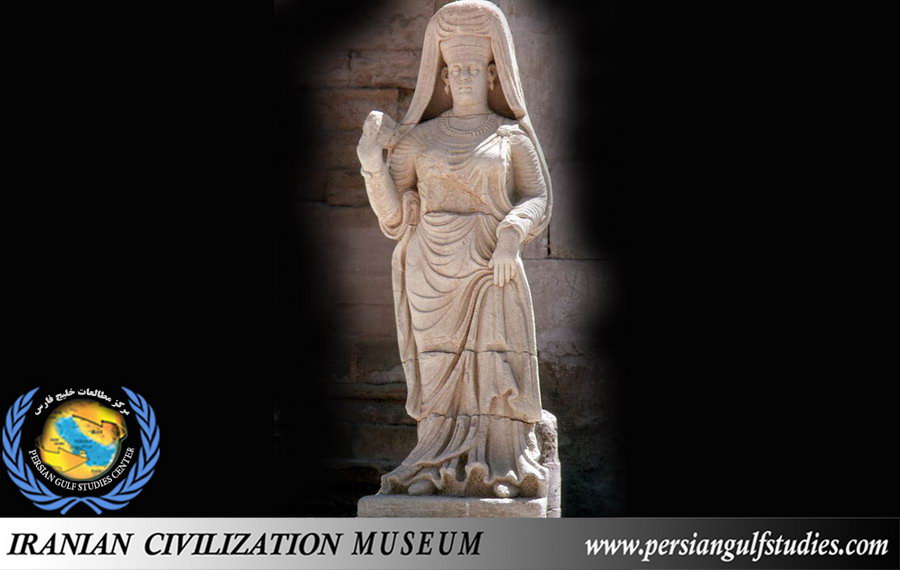 Statue of princess of Parthian from Hatra Iraq, Unfortunately, Parthian Ancient city of Hatra, destroyed By ISIS (Daesh) terrorists(Supported by Saudi arabia)
Statue of princess of Parthian from Hatra Iraq, Unfortunately, Parthian Ancient city of Hatra, destroyed By ISIS (Daesh) terrorists(Supported by Saudi arabia)
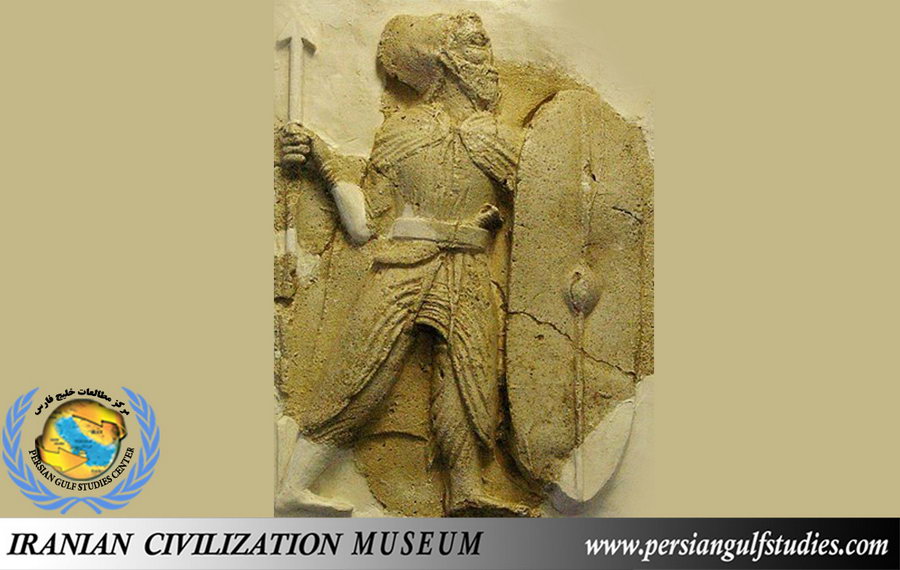 Zahhak Castle, Historic sites -Parthian and Sassanid. East Azerbaijan Province, Hashtrud, Iran. According to various experts, it was inhabited from the second millennium BC until the Timurid era.
Zahhak Castle, Historic sites -Parthian and Sassanid. East Azerbaijan Province, Hashtrud, Iran. According to various experts, it was inhabited from the second millennium BC until the Timurid era.
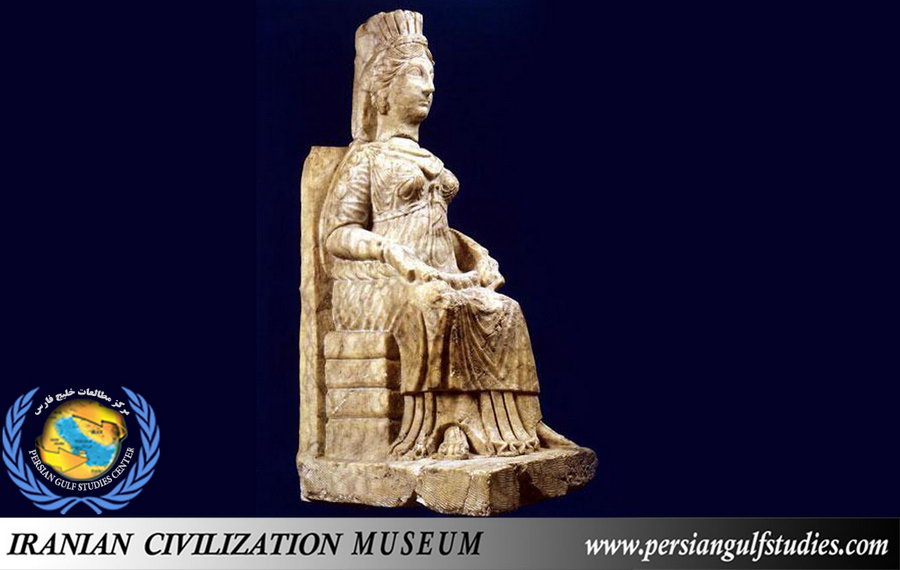 iranian Woman Statue, Hatra Iraq, Parthian period, 1st–2nd century AD. Unfortunately destroyed By ISIS terrorists (Supported by Saudi arabia)
iranian Woman Statue, Hatra Iraq, Parthian period, 1st–2nd century AD. Unfortunately destroyed By ISIS terrorists (Supported by Saudi arabia)
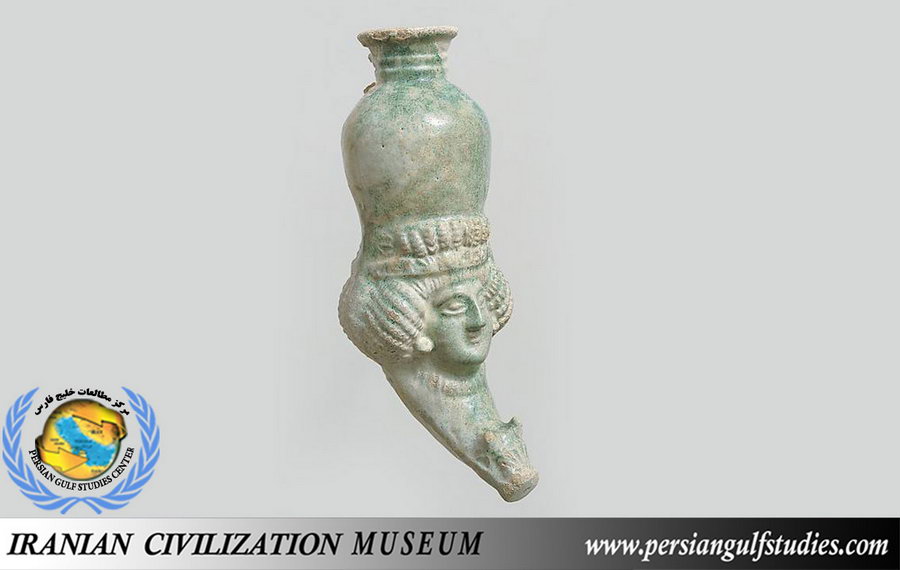 Rhyton with female head, late Parthian–early Sasanian, ca. 3rd century A.D. Mesopotamia, The Metropolitan Museum of Art
Rhyton with female head, late Parthian–early Sasanian, ca. 3rd century A.D. Mesopotamia, The Metropolitan Museum of Art
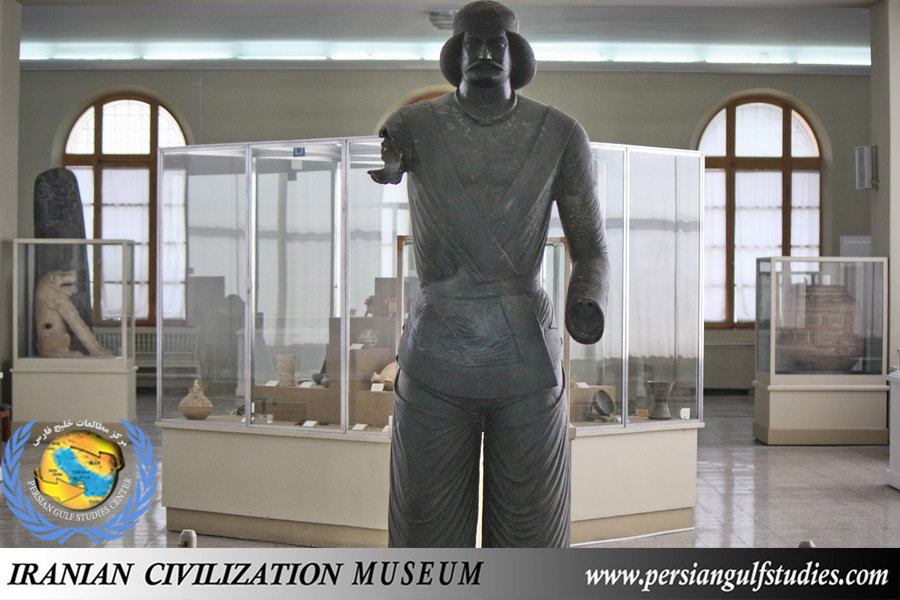 Statue of Surena, found in Mal-e-Mir, Khuzestan. Surena, Suren, or Soren, also known as Rustaham Suren-Pahlav (84 BC – 53 BC) was a Parthian headed during the 1st century BC, he was a member of the House of Suren and was best known for defeating the Romans in the Battle of Carrhae. National Museum of Iran
Statue of Surena, found in Mal-e-Mir, Khuzestan. Surena, Suren, or Soren, also known as Rustaham Suren-Pahlav (84 BC – 53 BC) was a Parthian headed during the 1st century BC, he was a member of the House of Suren and was best known for defeating the Romans in the Battle of Carrhae. National Museum of Iran
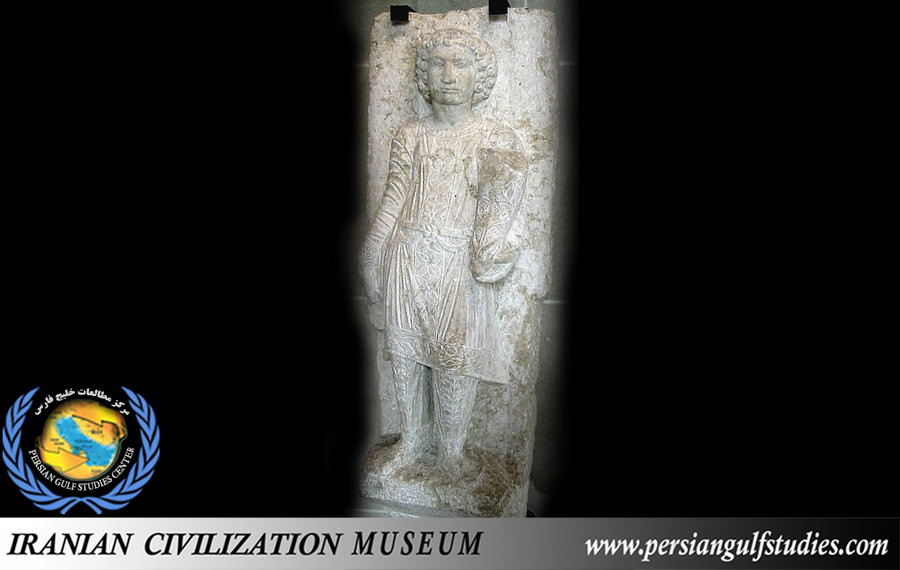 Young man with Parthian costume. Palmyra, Syria, 1st half of the 3rd century AD. Decoration of a funerary stela. Louvre museum.
Young man with Parthian costume. Palmyra, Syria, 1st half of the 3rd century AD. Decoration of a funerary stela. Louvre museum.
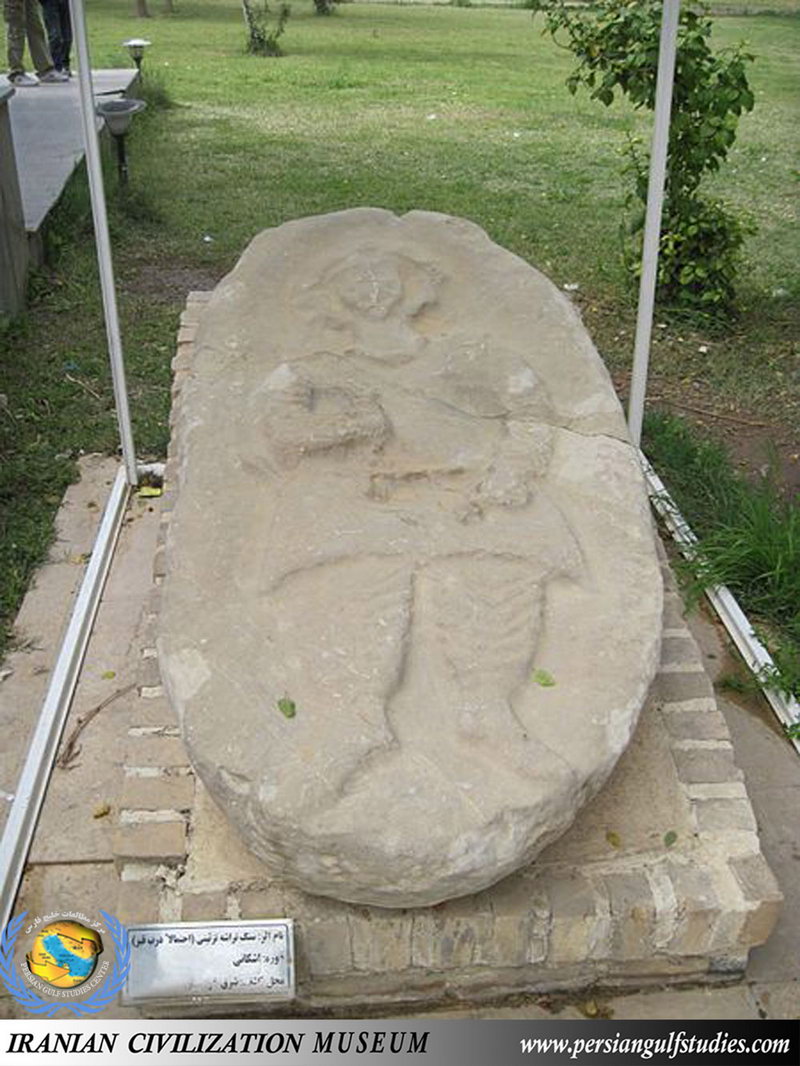 Standing man, 1st–2nd century a.d. Parthian period - Iran, Gray stone. The Susa Museum of Iran.
Standing man, 1st–2nd century a.d. Parthian period - Iran, Gray stone. The Susa Museum of Iran.
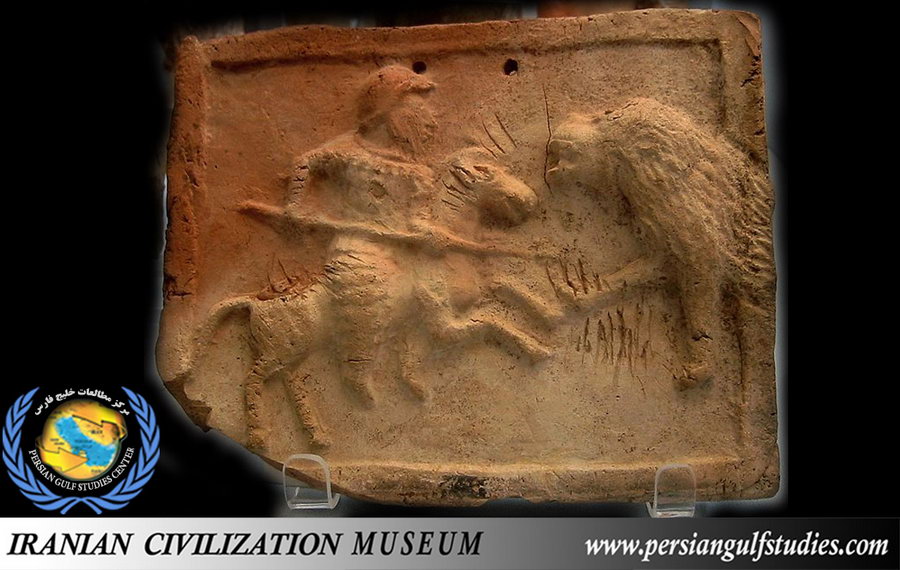 parthian horse cavalry battle with the lion's. Britain Museum.
parthian horse cavalry battle with the lion's. Britain Museum.
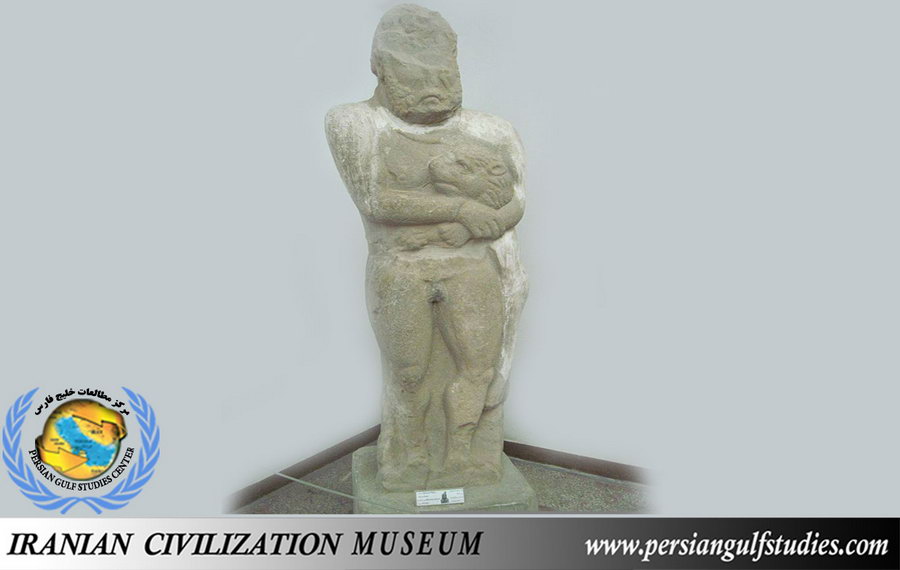 Hercules Statue battle with the lion's, parthian period. iran, susa museum
Hercules Statue battle with the lion's, parthian period. iran, susa museum
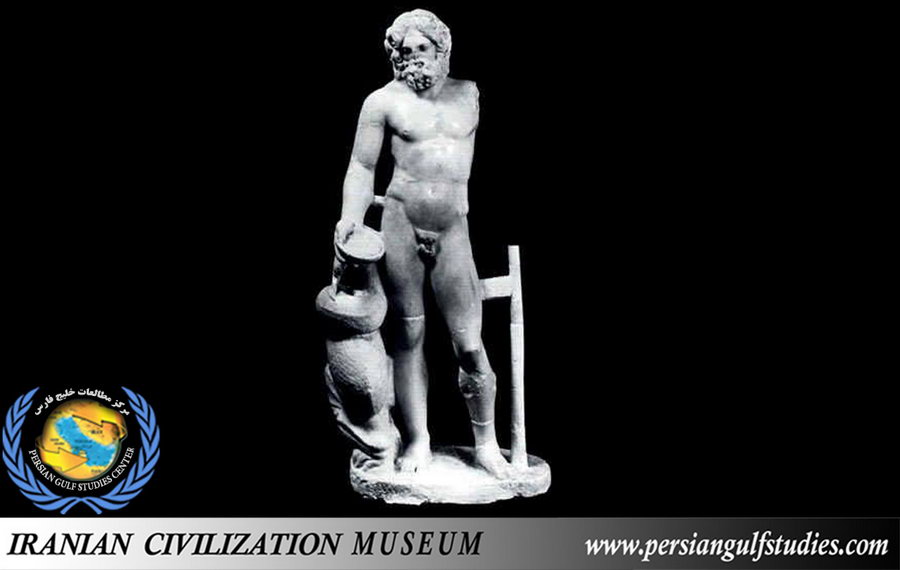 Statue of Parthian Kings from Hatra Iraq, Mosul Museum. Unfortunately destroyed By ISIS terrorists (Supported by Saudi arabia)
Statue of Parthian Kings from Hatra Iraq, Mosul Museum. Unfortunately destroyed By ISIS terrorists (Supported by Saudi arabia)
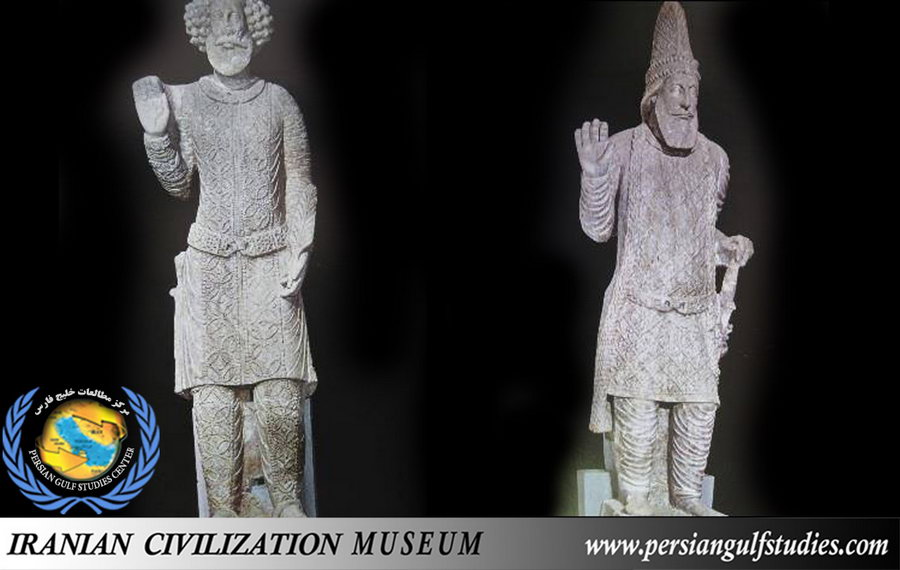 Statue of Parthian man from Hatra Iraq, Mosul Museum. Unfortunately destroyed By ISIS terrorists (Supported by Saudi arabia)
Statue of Parthian man from Hatra Iraq, Mosul Museum. Unfortunately destroyed By ISIS terrorists (Supported by Saudi arabia)
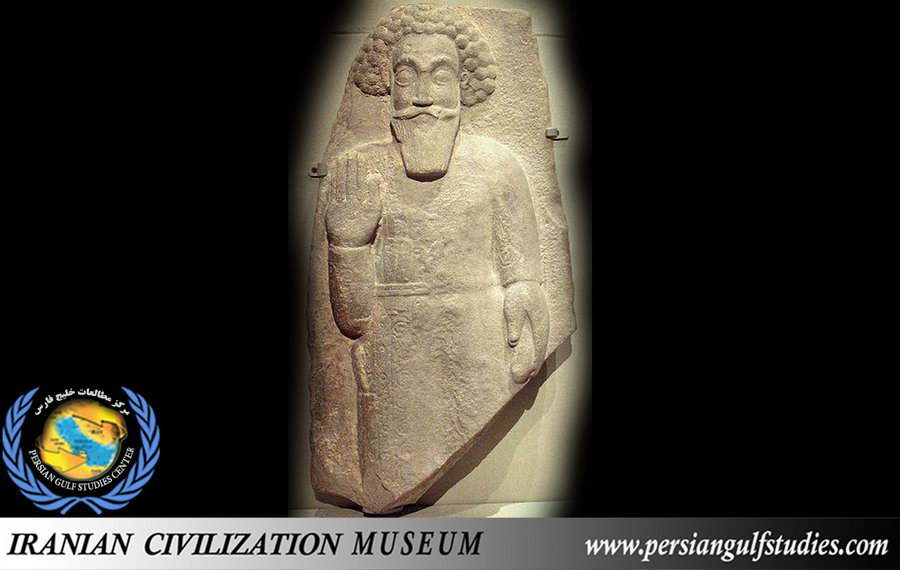 Standing parthian man,1st–2nd century a.d. The Metropolitan Museum of Art
Standing parthian man,1st–2nd century a.d. The Metropolitan Museum of Art
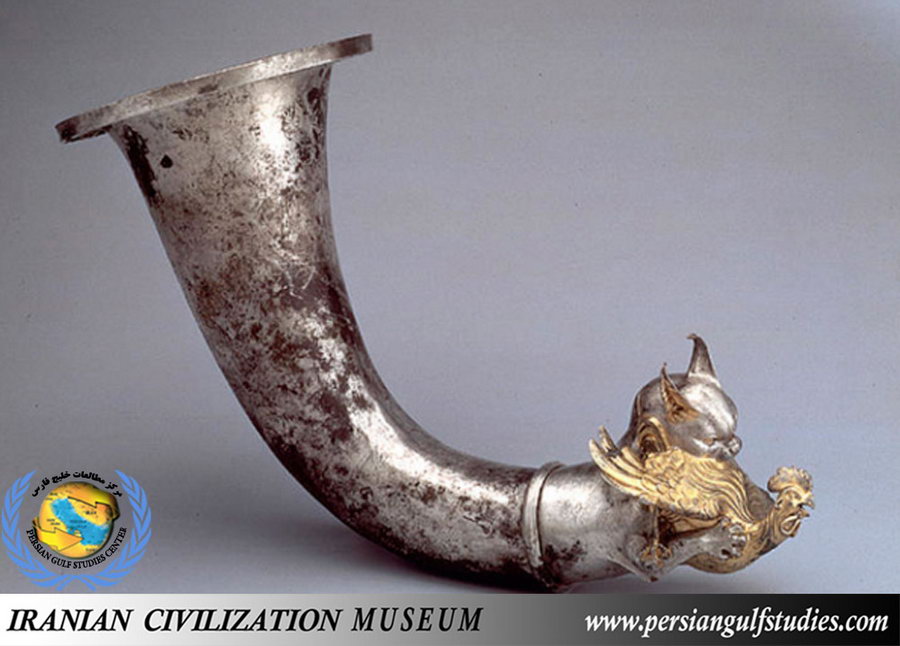 Gold-Silver Rhyton with a caracal cat and a fowl. This stunning rhyton or drinking horn depicts the protome (forepart) of a desert lynx (caracal cat, Felis caracal), clutching a desperate cockerel in his paws. japan Miho Museum
Gold-Silver Rhyton with a caracal cat and a fowl. This stunning rhyton or drinking horn depicts the protome (forepart) of a desert lynx (caracal cat, Felis caracal), clutching a desperate cockerel in his paws. japan Miho Museum
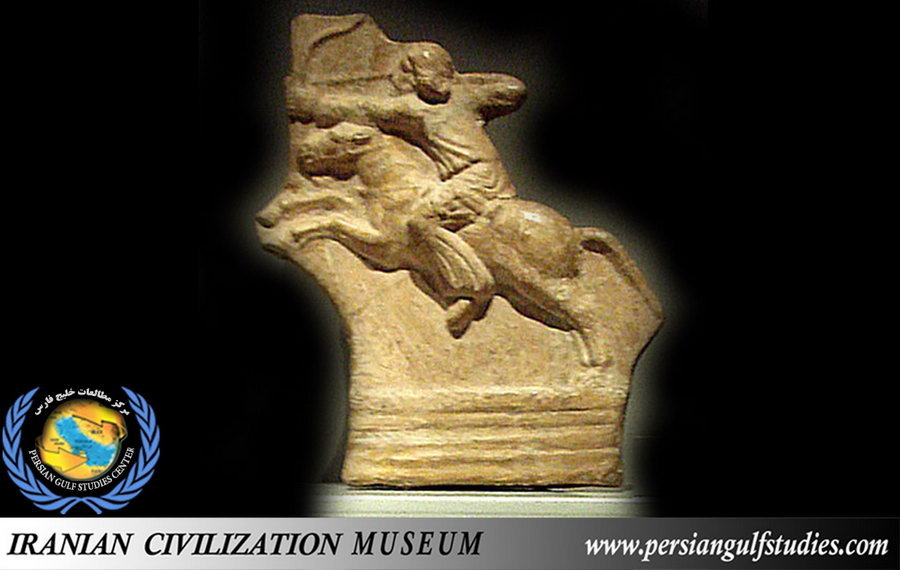 Parthian horsemen, now on display at the Palazzo Madama, Turin.
Parthian horsemen, now on display at the Palazzo Madama, Turin.
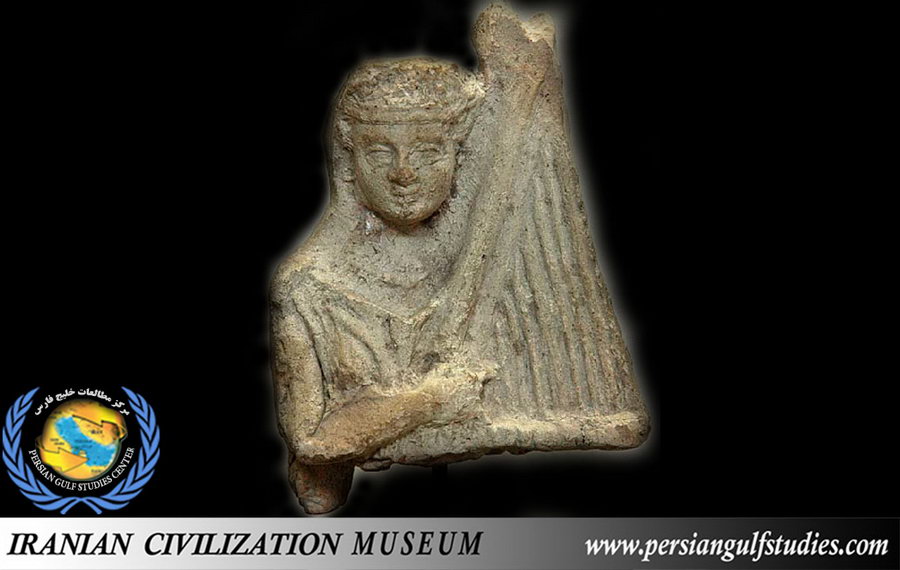 harpist of parthian woman, The upper torso of the pottery shows a harper. The statue was found in Susa, and is presumed to belong to the period of Seleucid or Parthian, between 300 BC to 300 AD. Louvre Museum.
harpist of parthian woman, The upper torso of the pottery shows a harper. The statue was found in Susa, and is presumed to belong to the period of Seleucid or Parthian, between 300 BC to 300 AD. Louvre Museum.
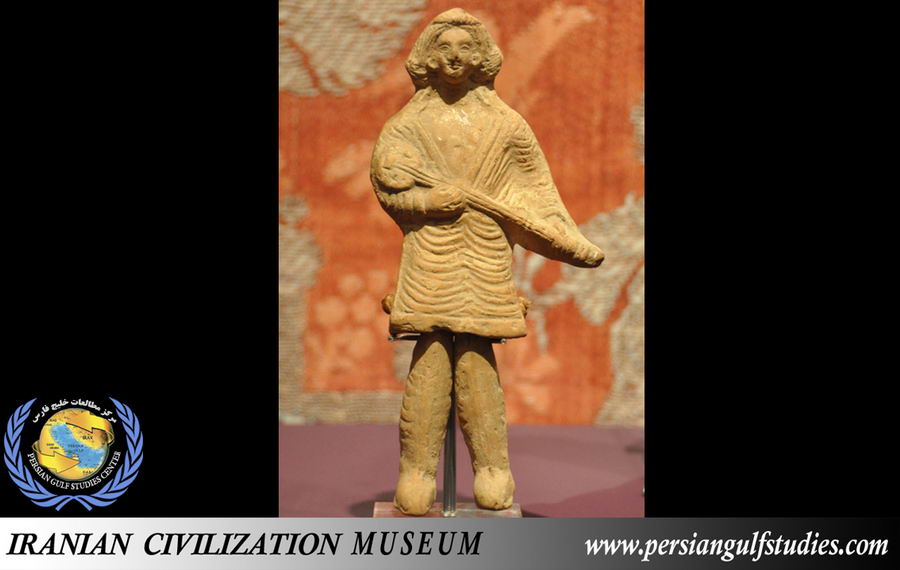 Parthian lute player, Parthian wonderful art, Museum, Leiden, Rijksmuseum voor Oudheden
Parthian lute player, Parthian wonderful art, Museum, Leiden, Rijksmuseum voor Oudheden
Parthian Magnificent Heritage
Palaces, temples, tombs, buildings &...
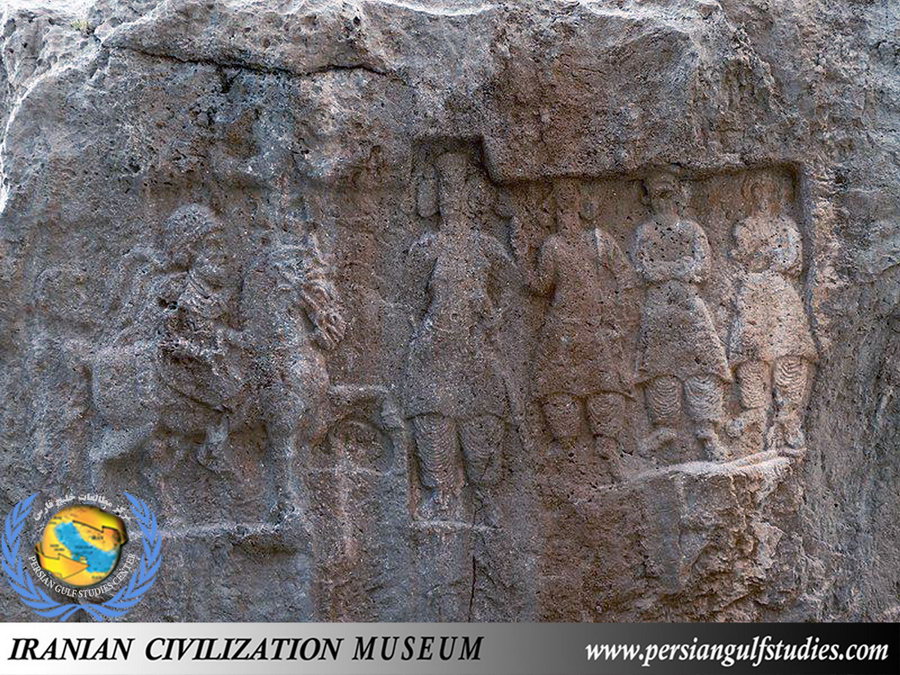 A rock-carved relief of Mithridates I of Parthia (r. c. 171–138 BC), seen riding on horseback, at Xong-e Ashdar, city of Izeh, Khūzestān Province, Iran
A rock-carved relief of Mithridates I of Parthia (r. c. 171–138 BC), seen riding on horseback, at Xong-e Ashdar, city of Izeh, Khūzestān Province, Iran
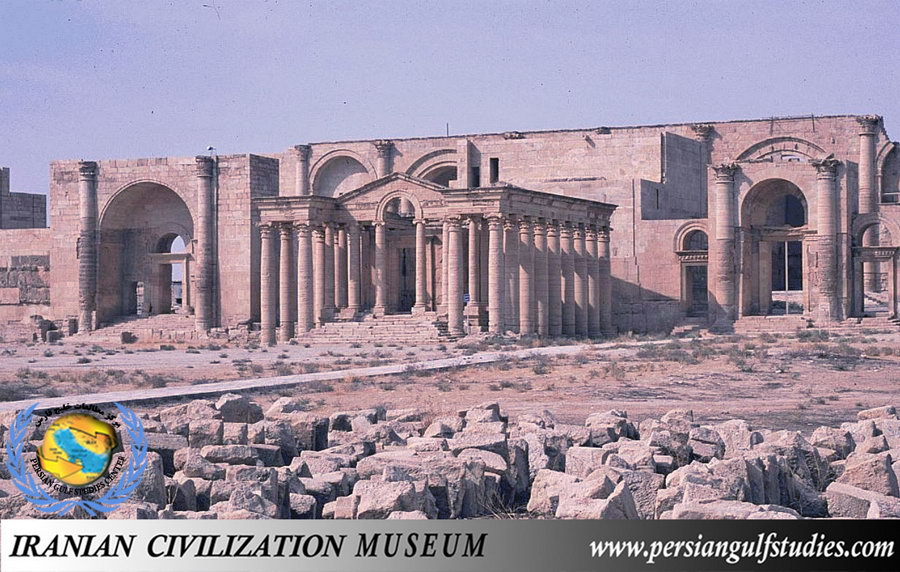 Iranian ancient city in Hatra (iraq), Hatra was an ancient city in the Ninawa Governorate and al-Jazira region of Iraq. It was known as al-Hadr, a name which appears once in ancient inscriptions, and it was in the ancient Persian province of Khvarvaran. The city lies 290 km (180 mi) northwest of Baghdad and 110 km (68 mi) southwest of Mosul. Unfortunately destroyed By ISIS terrorists (Supported by Saudi arabia)
Iranian ancient city in Hatra (iraq), Hatra was an ancient city in the Ninawa Governorate and al-Jazira region of Iraq. It was known as al-Hadr, a name which appears once in ancient inscriptions, and it was in the ancient Persian province of Khvarvaran. The city lies 290 km (180 mi) northwest of Baghdad and 110 km (68 mi) southwest of Mosul. Unfortunately destroyed By ISIS terrorists (Supported by Saudi arabia)
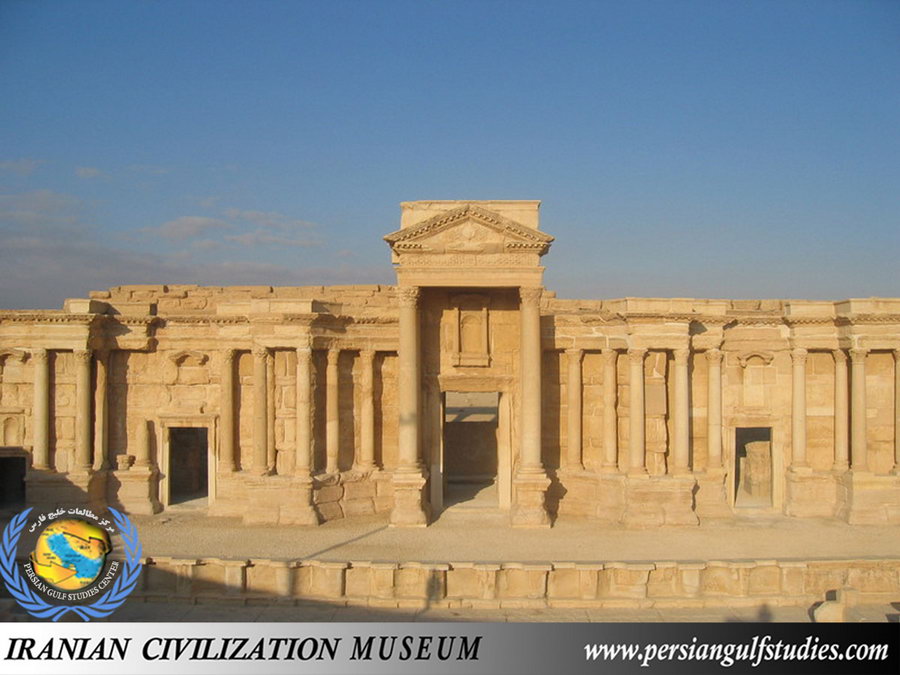 Palmyra was an ancient persian-Roman city, located in Homs Governorate, Syria. Palmyra was first attested in the early second millennium BC as a caravan stop for travelers crossing the Syrian Desert. In the mid-first century A.D., Palmyra, a wealthy and elegant Syrian city located along the caravan routes linking the Parthian Near East with the Mediterranean ports of Roman Syria and Phoenicia, came under Roman control. During the following period of great prosperity, the Aramaean citizens of Palmyra adopted customs and modes of dress from both the Iranian Parthian world to the east and the Greco-Roman west. Unfortunately palmyra has The risk of terrorists ISIS
Palmyra was an ancient persian-Roman city, located in Homs Governorate, Syria. Palmyra was first attested in the early second millennium BC as a caravan stop for travelers crossing the Syrian Desert. In the mid-first century A.D., Palmyra, a wealthy and elegant Syrian city located along the caravan routes linking the Parthian Near East with the Mediterranean ports of Roman Syria and Phoenicia, came under Roman control. During the following period of great prosperity, the Aramaean citizens of Palmyra adopted customs and modes of dress from both the Iranian Parthian world to the east and the Greco-Roman west. Unfortunately palmyra has The risk of terrorists ISIS
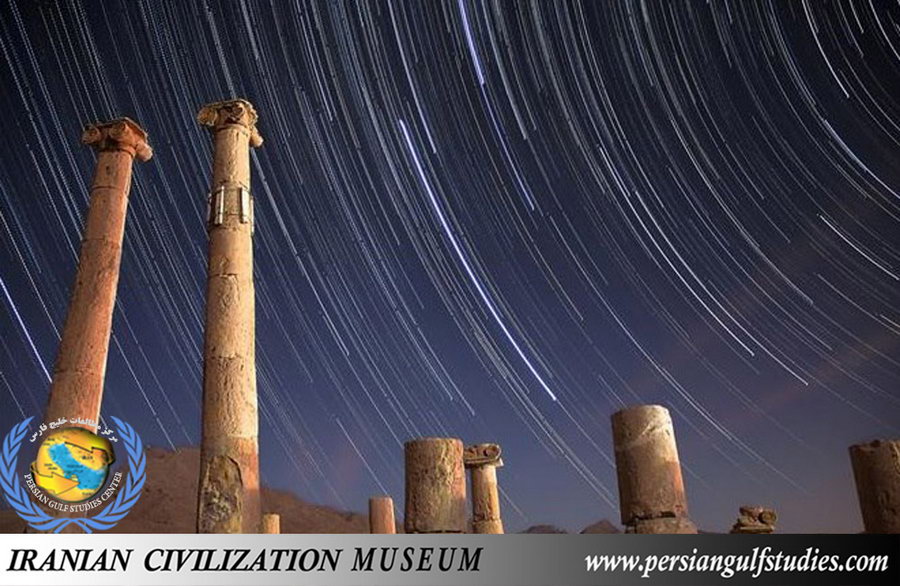 Khurheh is a village in Khurheh Rural District, in the Central District of Mahallat County, Markazi Province, Iran. The village is located 12 miles (19 km) north of Mahallat, with historical buildings believed to be of Parthian period. This site was first excavated by Naser al-Din Shah Qajar, on a treasure hunt. It also has an inscription on a rock that date to Seljuq Empire.
Khurheh is a village in Khurheh Rural District, in the Central District of Mahallat County, Markazi Province, Iran. The village is located 12 miles (19 km) north of Mahallat, with historical buildings believed to be of Parthian period. This site was first excavated by Naser al-Din Shah Qajar, on a treasure hunt. It also has an inscription on a rock that date to Seljuq Empire.
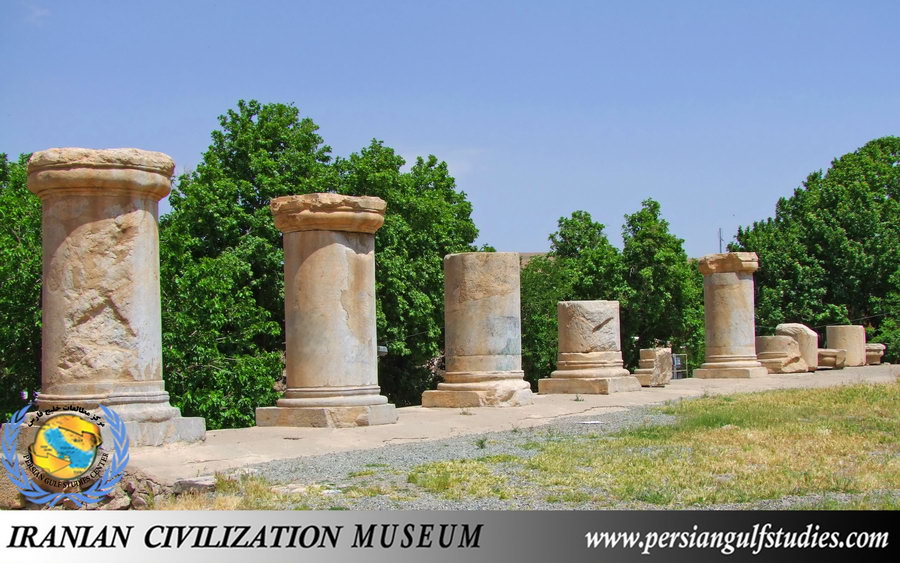 The Anahita Temple is the name of one of two archaeological sites in Iran popularly thought to have been attributed to the ancient deity Anahita. The larger and more widely known of the two is located at Kangāvar in Kermanshah Province. Originally, 200 BCE was proposed as the date of the site's construction.
The Anahita Temple is the name of one of two archaeological sites in Iran popularly thought to have been attributed to the ancient deity Anahita. The larger and more widely known of the two is located at Kangāvar in Kermanshah Province. Originally, 200 BCE was proposed as the date of the site's construction.
